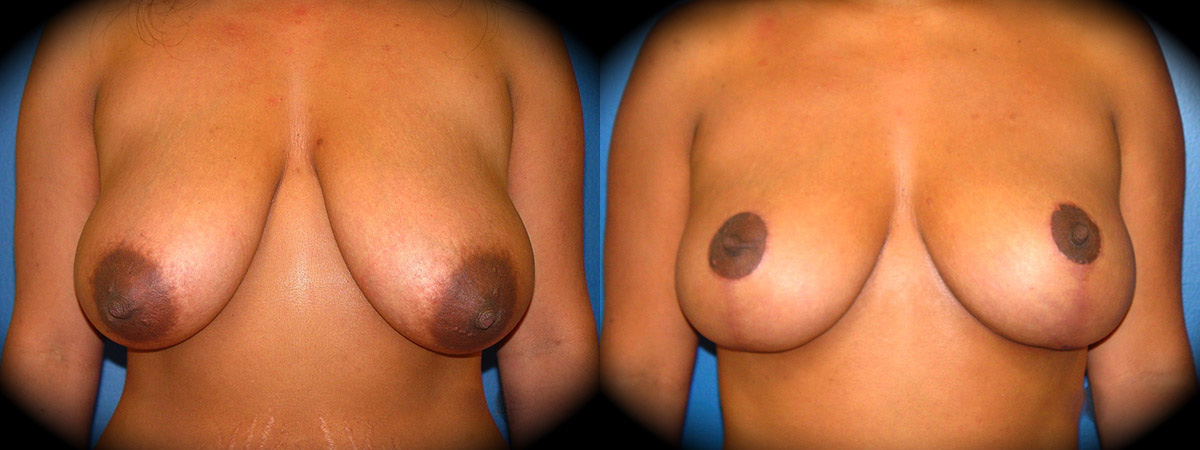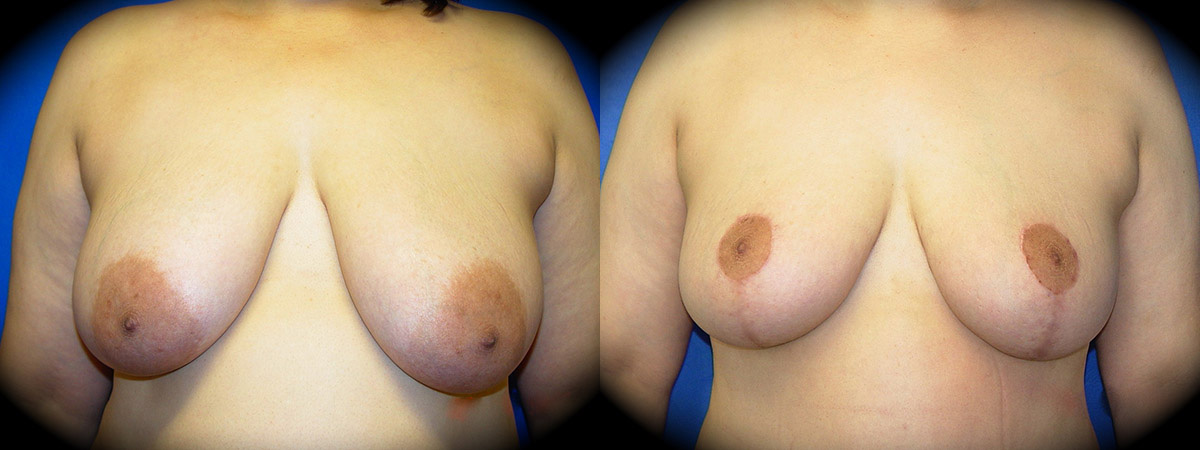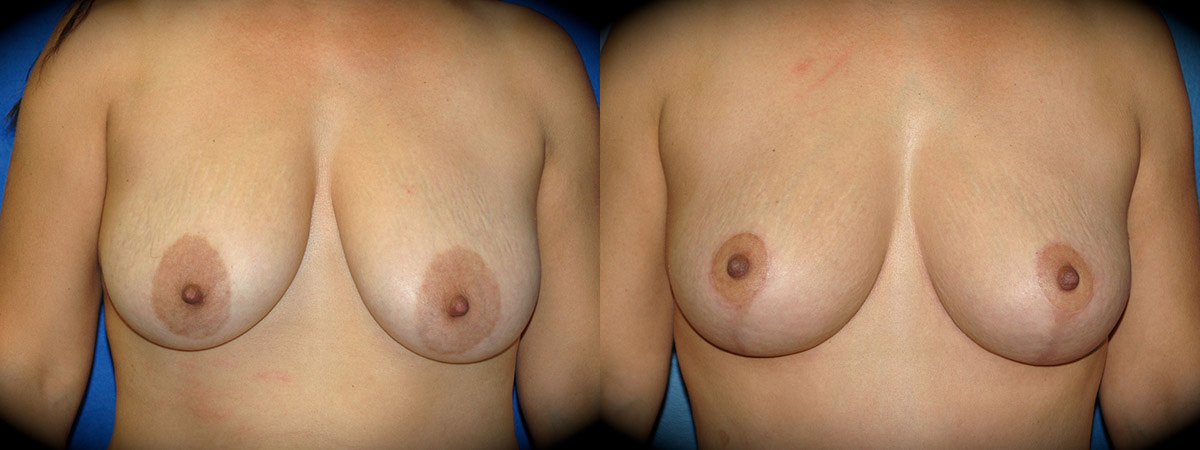How Can Breast Lift Surgery Help?
Breast lift surgery removes excess breast tissue that causes a lack of definition in the breasts and provides extra support to the weakened tissue for longer-lasting results. During your breast lift surgery, we can improve the position and projection of the nipple-areola complex, completely transforming the aesthetics of the breasts.
Schedule a ConsultationCandidates
Grade I ptosis:
The lower breast tissue sits at the inframammary line, but your nipples still have a forward projection.
Grade II ptosis:
The lower breast tissue sits below the inframammary line; you may begin to see drooping of the nipples.
Grade III ptosis:
The lower breast tissue sits significantly below the inframammary line, your nipples have begun to point downwards.
Grade IV ptosis:
Most of your breast tissue sits below the inframammary line, and your nipples point towards the floor.
Incision Option
Crescent:
A half-moon shape created around the areola, it is best suited for mild sagging.
Donut:
Circling the entire areola, and treats mild or low moderate sagging.
Lollipop:
Circling the areola, with a vertical incision along the lower breast crease, which is best for moderate sagging.
Anchor:
Along the areola, down the breast tissue, and across the breast crease, this incision treats severe sagging.
What are your Concerns?
Recovery
Breast lift surgery requires a few days of downtime with limited physical activity. Within a few days, patients can return to work. A surgical dressing or surgical bra will be applied over the breasts and should be worn for several weeks to reduce swelling and provide support. Patients can go home a few hours after the procedure. It is important to follow the specific instructions provided by Dr. O’Toole to ensure the safest recovery possible.
Cost
The cost of breast lift surgery is dependent on the extent of the surgery, the technique used, and other factors such as facility and anesthesia fees.
Pain
Once anesthesia wears off, some patients may experience minimal pain or discomfort. Pain can be controlled with prescription medications. Your breasts may feel tight and sensitive to the touch, but once swelling alleviates, they will feel more normal.
Scarring
It is common for breast lift patients to develop some mild, visible scarring. The severity of scarring will depend on the extent of your incision and your natural healing process. Scars do fade with time.
Results
The results from breast lift surgery are immediately noticeable. As soon as the post-surgical swelling reduces and incision lines fade, patients can expect to achieve breasts that are perkier and more flattering to their entire physique.
Frequently Asked Questions
-
What type of anesthesia is used for breast lift surgery?
Breast lift surgery is performed using intravenous sedation and general anesthesia.
-
How long do the results of breast lift surgery last?
The results of breast lift surgery tend to last for years. However, additional pregnancies and weight fluctuations may affect the appearance of your breasts. This is why we suggest only undergoing surgery after you have had children and have reached your weight loss goals.
-
What are the potential side effects of breast lift surgery?
There are some side effects and risks associated with breast lift surgery. Some of these may include:
- Infection
- Bleeding
- Poor scarring
- Pain
- Anesthesia risks
- Temporary numbness
-
Can breast lift surgery be combined with other procedures?
Women considering breast lift surgery may also feel that their breasts lack attractive fullness and volume. Dr. O’Toole commonly recommends combining breast lift surgery with implants to create the ideal sized and shaped breasts you desire.







